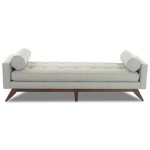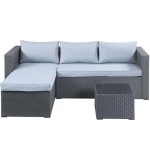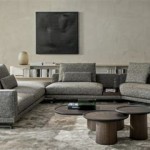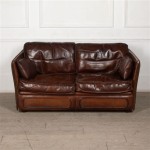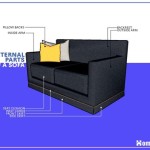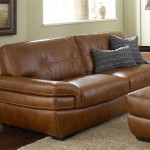Sofa Standard Size in Inches: A Comprehensive Guide
The selection of a sofa is a crucial decision in furnishing a living space. Beyond aesthetics and comfort, determining the appropriate sofa size is paramount for ensuring a functional and harmonious environment. Understanding standard sofa dimensions in inches allows for informed decision-making, preventing issues related to space constraints and ensuring the sofa complements the room's overall design. This article provides a detailed exploration of standard sofa sizes, addressing various configurations and offering guidance on selecting the optimal dimensions for specific needs.
The term "standard size" can be misleading as sofa dimensions vary considerably based on design, style, and manufacturer. However, generally accepted ranges exist that serve as benchmarks for different sofa types. These ranges are crucial when planning a room layout, especially when integrating the sofa with other furniture pieces like coffee tables, side tables, and entertainment units.
Understanding Standard Sofa Size Ranges
Standard sofas typically fall within a specific range of dimensions. Length, depth, and height are the key measurements to consider. For a standard three-seater sofa, the length generally ranges from 72 to 96 inches. The depth, measured from the back of the sofa to the front of the cushion, typically falls between 32 and 40 inches. The height, measured from the floor to the top of the back cushions, generally ranges from 30 to 36 inches. These are general ranges, and variations are common. Analyzing each element is essential for accurate planning.
Furthermore, variations occur based on the design style of the sofa. A traditional sofa with rolled arms and a high back may have different dimensions compared to a modern sofa with clean lines and a lower profile. Considerations such as arm style and leg height can also influence the overall dimensions. It is essential to consult the manufacturer's specifications for precise measurements before making a purchase.
The internal dimensions, particularly seat depth and seat height, are also important considerations for comfort. Seat depth refers to the distance from the front edge of the seat cushion to the back cushion, influencing how far back a person can sit. Seat height, the distance from the floor to the top of the seat cushion, affects how easily a person can sit down and stand up. A seat depth of 20-24 inches and a seat height of 17-20 inches are generally considered comfortable for most adults.
Different Sofa Styles and Their Standard Dimensions
Different sofa styles adhere to different dimensional standards. Loveseats, designed for two people, are generally smaller than standard three-seater sofas. Their length typically ranges from 50 to 70 inches, with depth and height measurements similar to those of larger sofas. Sectional sofas, composed of multiple modular pieces, present a more complex dimensional picture.
Sectional sofas can be configured in various shapes, such as L-shapes, U-shapes, or semi-circular arrangements. The overall dimensions depend on the number of sections and their individual sizes. A typical L-shaped sectional might measure 90-110 inches in length along one side and 60-90 inches along the other. U-shaped sectionals can span 100-130 inches in width and depth. Detailed measurements of each section and the overall configuration are crucial when planning a room layout with a sectional sofa.
Sleeper sofas, designed to convert into beds, have unique dimensional considerations. When in sofa mode, their dimensions are similar to standard sofas. However, when unfolded into a bed, they require additional space. A queen-size sleeper sofa, for example, will require approximately 80 inches in length when unfolded. Therefore, it is important to account for this extra space when determining placement within a room.
Chaise sofas, featuring an extended seat for lounging, also have distinct dimensions. The chaise portion adds to the overall length of the sofa, typically extending beyond the standard depth. A chaise sofa might measure 70-90 inches in length and 60-70 inches in depth on the chaise side. These dimensions should be carefully considered to ensure adequate space for comfortable usage.
Factors Influencing Sofa Size Selection
Several factors influence the selection of an appropriate sofa size. The size of the room is perhaps the most critical consideration. A large sofa in a small room can overwhelm the space, making it feel cramped and uncomfortable. Conversely, a small sofa in a large room can appear insignificant and disproportionate.
The layout of the room also plays a significant role. Traffic flow patterns need to be considered to ensure that the sofa does not obstruct pathways or create bottlenecks. The placement of doorways, windows, and other furniture pieces also influences the optimal sofa size and configuration. Creating a floor plan, either digitally or using traditional methods, allows for visualizing the placement of the sofa and assessing its impact on the room's spatial dynamics.
Personal needs and lifestyle also contribute to sofa size selection. A household with multiple members might require a larger sofa, such as a sectional, to accommodate everyone comfortably. Individuals who frequently entertain guests might also opt for a larger sofa to provide adequate seating. Conversely, a single individual or a couple might find a smaller loveseat or a compact sofa sufficient.
The sofa's intended use also influences size considerations. A sofa primarily used for watching television might benefit from a deeper seat depth, allowing for comfortable lounging. A sofa used for formal entertaining might prioritize a more upright seating position. The primary function of the sofa should be considered when evaluating different dimensions and styles.
Accessibility is another crucial factor. The sofa needs to fit through doorways, hallways, and stairwells during delivery and installation. Measuring these access points beforehand can prevent potential issues. Some sofas are designed with removable legs or backs to facilitate easier maneuverability. Confirming these features with the retailer or manufacturer is advisable.
Furthermore, consider the visual weight of the sofa. Darker colors and heavier fabrics can make a sofa appear larger than it actually is. Lighter colors and more delicate fabrics can make a sofa appear smaller. Choosing a sofa with an appropriate visual weight can help to maintain balance and harmony within the room.
Tips for Measuring Your Space and Selecting the Right Sofa Size
Accurate measurements are essential when selecting a sofa. Use a measuring tape to determine the length and width of the room where the sofa will be placed. Mark out the area where the sofa will be positioned, taking into account any architectural features or existing furniture that might affect placement.
Once the room dimensions are known, consider the desired layout and traffic flow. Create a floor plan, either on paper or using online tools, to visualize the placement of the sofa and other furniture pieces. This allows for assessing how the sofa will impact the overall spatial dynamics and identifying any potential issues.
When considering specific sofa models, request detailed measurements from the retailer or manufacturer. Pay attention to overall length, depth, and height, as well as internal dimensions such as seat depth and seat height. Compare these measurements to the available space and the desired layout to ensure a proper fit.
Consider using painter's tape to mark out the dimensions of the sofa on the floor. This provides a visual representation of the sofa's footprint and allows for assessing its impact on the room's spatial dynamics. This simple technique can help to avoid costly mistakes and ensure that the chosen sofa is the right size for the space.
When purchasing a sectional sofa, pay close attention to the dimensions of each individual section and the overall configuration. Ensure that the chosen configuration fits comfortably within the available space and allows for comfortable movement throughout the room. Consider the placement of the chaise lounge, if applicable, and ensure that it does not obstruct pathways or create bottlenecks.
Finally, consider the style and scale of other furniture pieces in the room. The sofa should complement the existing furniture and not overpower the space. If the room already contains large, imposing furniture pieces, a smaller, more streamlined sofa might be a better choice. Conversely, if the room contains smaller, more delicate furniture pieces, a larger, more substantial sofa might be appropriate.

Sofa Dimensions 101 Measuring For Your Perfect

Verona Sofa Fawn Velvet Urban Ladder

Sofa Size Calculator

Share Image Wooden Sofa Designs Furniture Details Design

Nill Astonic 2 Seater Fabric Sofa Beige Furniture

Sofa Dimensions

Sofa Dimensions A Ultimate Guide With Drawings Homenish Layout Living Room Design Furniture Standard

L Shape Sofa Set Lounger Leatherette Standard Size White Gkw Retail

Loveseat Vs Sofa Size Cost And Functional Differences

Esquel Leatherette Sofa Cappuccino Urban Ladder

